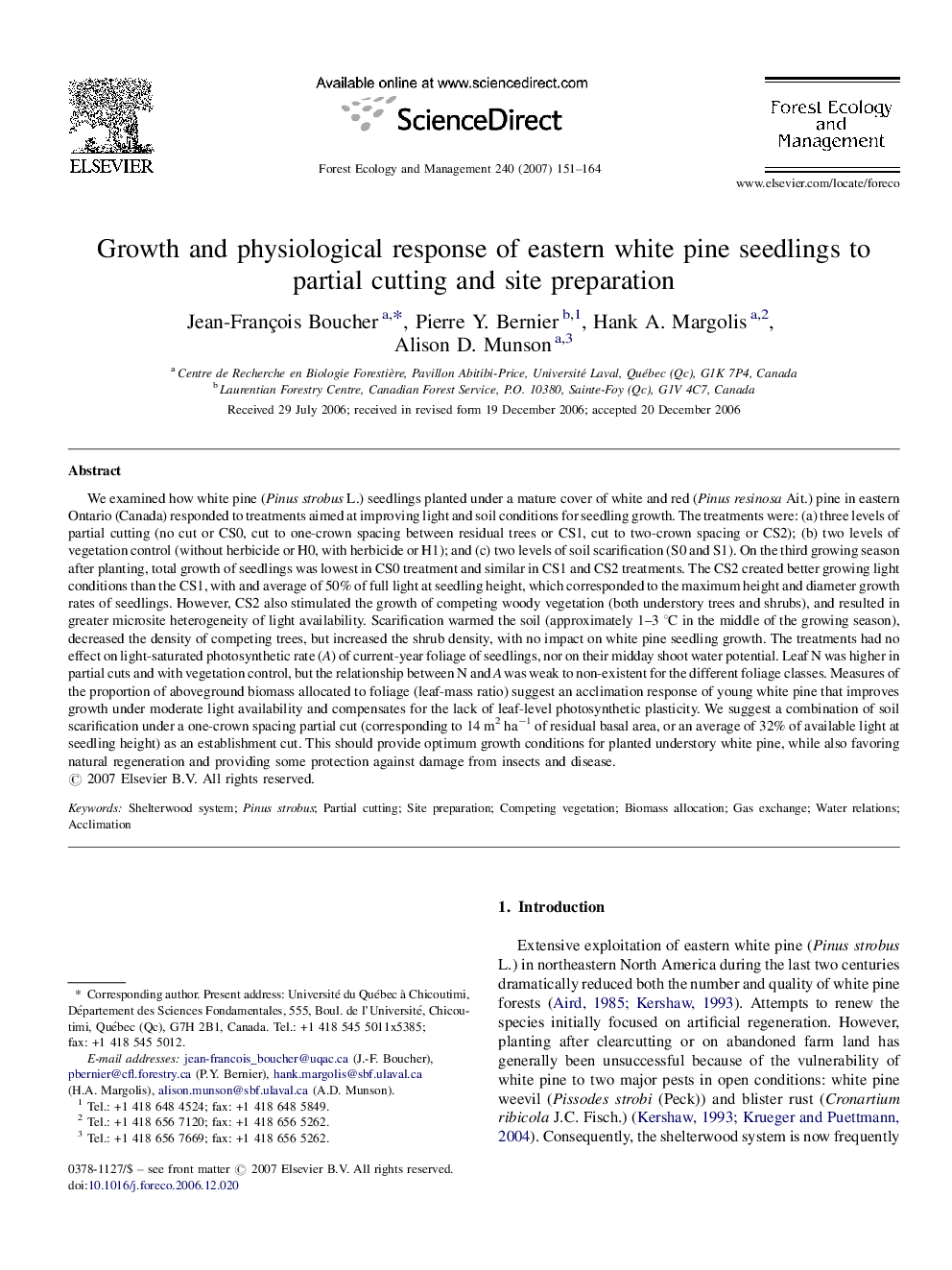| کد مقاله | کد نشریه | سال انتشار | مقاله انگلیسی | نسخه تمام متن |
|---|---|---|---|---|
| 89725 | 159353 | 2007 | 14 صفحه PDF | دانلود رایگان |

We examined how white pine (Pinus strobus L.) seedlings planted under a mature cover of white and red (Pinus resinosa Ait.) pine in eastern Ontario (Canada) responded to treatments aimed at improving light and soil conditions for seedling growth. The treatments were: (a) three levels of partial cutting (no cut or CS0, cut to one-crown spacing between residual trees or CS1, cut to two-crown spacing or CS2); (b) two levels of vegetation control (without herbicide or H0, with herbicide or H1); and (c) two levels of soil scarification (S0 and S1). On the third growing season after planting, total growth of seedlings was lowest in CS0 treatment and similar in CS1 and CS2 treatments. The CS2 created better growing light conditions than the CS1, with and average of 50% of full light at seedling height, which corresponded to the maximum height and diameter growth rates of seedlings. However, CS2 also stimulated the growth of competing woody vegetation (both understory trees and shrubs), and resulted in greater microsite heterogeneity of light availability. Scarification warmed the soil (approximately 1–3 °C in the middle of the growing season), decreased the density of competing trees, but increased the shrub density, with no impact on white pine seedling growth. The treatments had no effect on light-saturated photosynthetic rate (A) of current-year foliage of seedlings, nor on their midday shoot water potential. Leaf N was higher in partial cuts and with vegetation control, but the relationship between N and A was weak to non-existent for the different foliage classes. Measures of the proportion of aboveground biomass allocated to foliage (leaf-mass ratio) suggest an acclimation response of young white pine that improves growth under moderate light availability and compensates for the lack of leaf-level photosynthetic plasticity. We suggest a combination of soil scarification under a one-crown spacing partial cut (corresponding to 14 m2 ha−1 of residual basal area, or an average of 32% of available light at seedling height) as an establishment cut. This should provide optimum growth conditions for planted understory white pine, while also favoring natural regeneration and providing some protection against damage from insects and disease.
Journal: Forest Ecology and Management - Volume 240, Issues 1–3, 15 March 2007, Pages 151–164